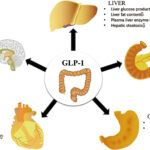
Testing of self-driving cars on California roads has resulted in about a dozen minor accidents during the past six years, but humans were to blame for the accidents, Delphi Automotive and Google said.
No one was hurt in the accidents, according to both companies. The accidents came to light after the Associated Press examined state public records covering the companies and the cars, which must be filed in order to test the vehicles on public roads. The filings became mandatory in September.
The total number of accidents isn’t clear. Google acknowledged 11 accidents; Delphi admitted to 1.
Chris Urmson, director of Google’s self-driving project, wrote in an Internet post that his company’s 11 accidents involved “light damage, no injuries.” Google has tested its vehicles over 1.7 million, nearly 1 million in self-driving mode.
“Not once was the self-driving car the cause of the accident,” he wrote.
Kristen Kinley, a spokeswoman for Delphi – a maker of automotive parts and components – said in an interview with Fortune that “these are engineering vehicles. You can’t get from A to B – to driverless cars – without a lot of testing. Driverless is still a long way off.”
As digital automotive safety technology improves, engineers are increasingly convinced that computers one day will take over for drivers, creating a transportation system that is far safer than today’s. Cars already can be equipped with sensors that can keep a car in its lane, brake to prevent a rear-end collision and detect pedestrians and bicyclists.
Yet few of the owners of the 250 million or so vehicles registered on U.S. roads have yet experienced even partially autonomous systems. The Boston Consulting Group, in a study released in January, forecasted “partially autonomous vehicles are likely to hit the roads in large numbers by 2017.”
The new technology is bound to worry and bewilder more than a few drivers, which is why Google, Delphi and the automakers are undertaking prolonged, extensive testing under real-world conditions to explore possible pitfalls and demonstrate technological effectiveness – with the goal of overcoming consumer skepticism.
“The potential for safety is enormous,” said Kinley. About 33,000 traffic fatalities were recorded in the U.S. in 2013. Delphi has been testing among its vehicles an Audi SQ5 in Silicon Valley. In October, while the car was stopped at an intersection, a second car jumped a median and collided with it, Kinley said. The car was in manual mode. No one was hurt.
In early April, Delphi’s autonomous Audi drove 3,400 miles from the west coast to New York, 99 percent of the distance without a driver controlling the car. The test was undertaken to demonstrate the vehicle’s capabilities.
“Many people don’t realize how far along some of these technologies are,” said Xavier Mosquet, leader of BCG’s automotive practice in North America, in the January report. BCG predicts that the technology will be “highly attractive to both carmakers and their customers.”
But first the public must be convinced that the computers, sensors and software that control these new machines will do a superior job of keeping it safe and sound.
[“source-fortune.com”]







